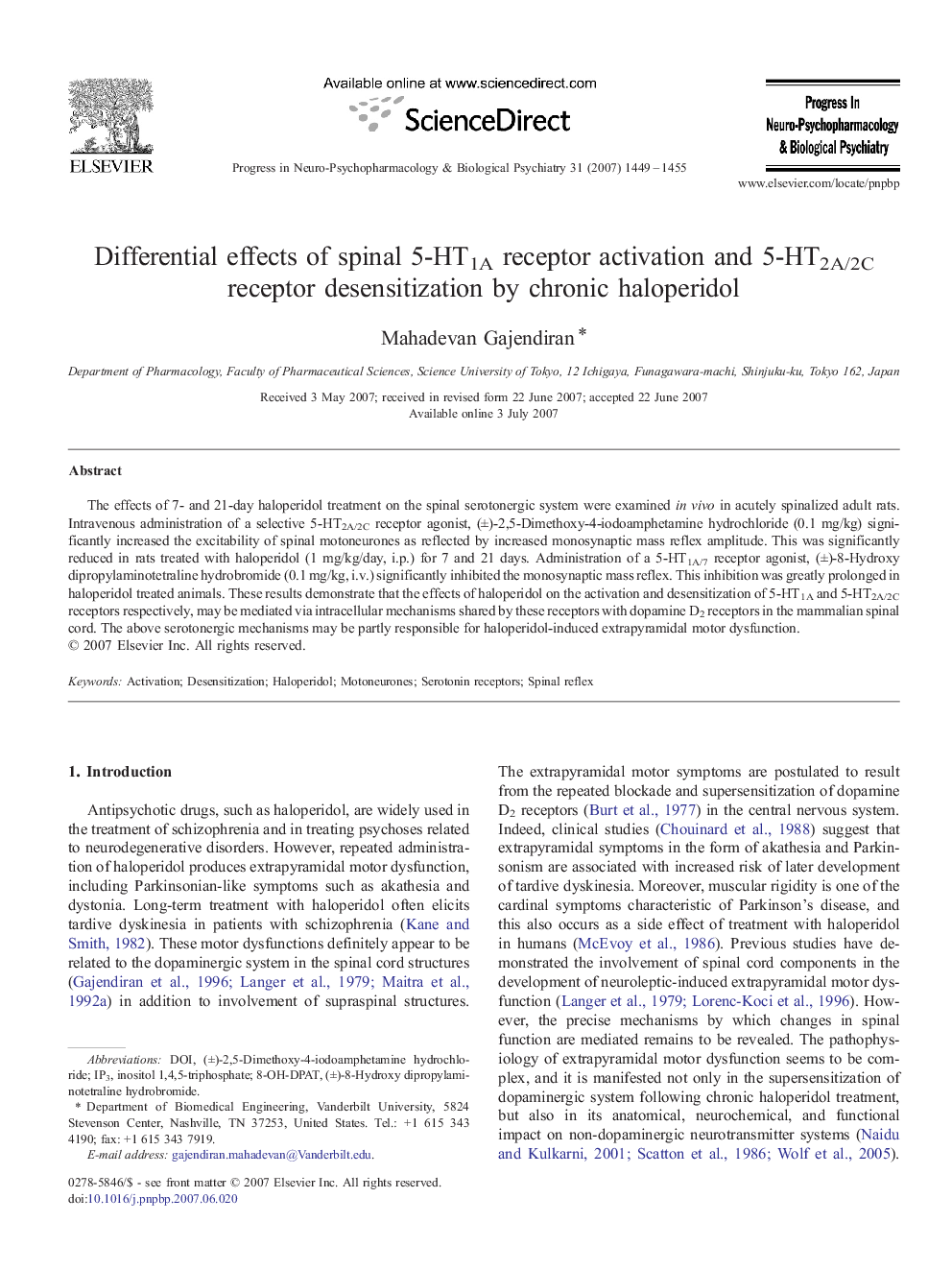| Article ID | Journal | Published Year | Pages | File Type |
|---|---|---|---|---|
| 2566165 | Progress in Neuro-Psychopharmacology and Biological Psychiatry | 2007 | 7 Pages |
Abstract
The effects of 7- and 21-day haloperidol treatment on the spinal serotonergic system were examined in vivo in acutely spinalized adult rats. Intravenous administration of a selective 5-HT2A/2C receptor agonist, (±)-2,5-Dimethoxy-4-iodoamphetamine hydrochloride (0.1 mg/kg) significantly increased the excitability of spinal motoneurones as reflected by increased monosynaptic mass reflex amplitude. This was significantly reduced in rats treated with haloperidol (1 mg/kg/day, i.p.) for 7 and 21 days. Administration of a 5-HT1A/7 receptor agonist, (±)-8-Hydroxy dipropylaminotetraline hydrobromide (0.1 mg/kg, i.v.) significantly inhibited the monosynaptic mass reflex. This inhibition was greatly prolonged in haloperidol treated animals. These results demonstrate that the effects of haloperidol on the activation and desensitization of 5-HT1A and 5-HT2A/2C receptors respectively, may be mediated via intracellular mechanisms shared by these receptors with dopamine D2 receptors in the mammalian spinal cord. The above serotonergic mechanisms may be partly responsible for haloperidol-induced extrapyramidal motor dysfunction.
Keywords
Related Topics
Life Sciences
Neuroscience
Biological Psychiatry
Authors
Mahadevan Gajendiran,
